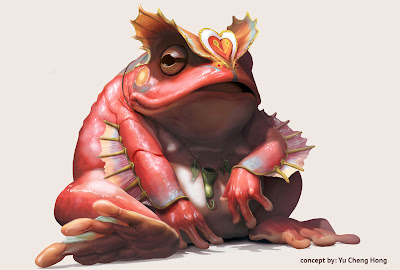Sculpture 3
I'm so glad I got to take this class for my elective. It's been a long time since I've taken a traditional class, and even longer since my last sculpture class. The purpose of this class was to create a life size bust of a character that was humanoid, and a mixture of an animal group that we pulled blindly out of a hat. I drew amphibian. We were allowed to add a mammal if we wanted. We then sketched out a few ideas, created a mini-bust as a guide, and began sculpting on our large bust.
You can view my classmates sculptures here: https://www.facebook.com/photo.php?v=10151542618084807
This is Madame Melotoad. She was a classically trained opera singer who over the years has become bitter after her damaged voice ended her career. She currently teaches students and tries to live vicariously through them.
 |
| Concept Sketch 1 |
My first rough sketches were aimed at making her part whale and part frog so that I could play around with the inflated neck idea. The problem was she was looking more fishy and sluggish than amphibian and since Amphibian was my category, I had to strip away the whale idea.
 | |
| Mini-bust |
The mini-bust was more of my experimentation phase. I was trying to figure out her hair, her neck, what kind of dress she was wearing, etc. This phase had a very muppety look to it.
The final sculpt came out very different from where I started. It was definitely a journey, but overall I'm happy with the way she came out. People tend to laugh and her expression, so that's a plus!





































